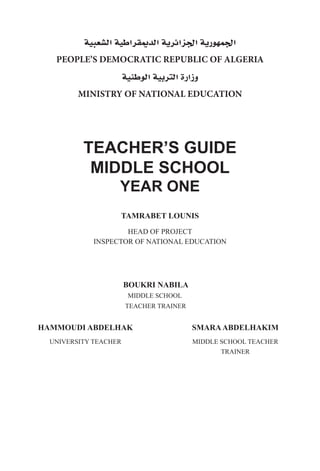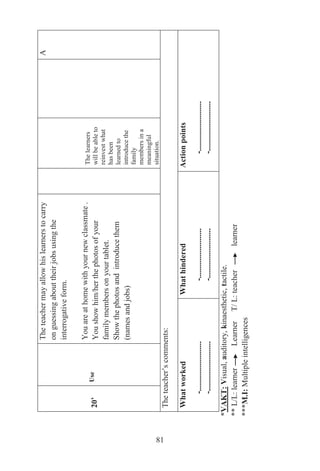This document provides an introduction and overview of the Teacher's Guide for the first year middle school English coursebook. It outlines the objectives of the coursebook, which are to develop students' English competencies in an integrated manner through listening, speaking, reading and writing. It emphasizes using a competency-based approach that links what is learned in school to real-world contexts. The guide is intended to help teachers effectively plan lessons and accommodate different learning styles by using a variety of teaching methods and techniques.































































































































